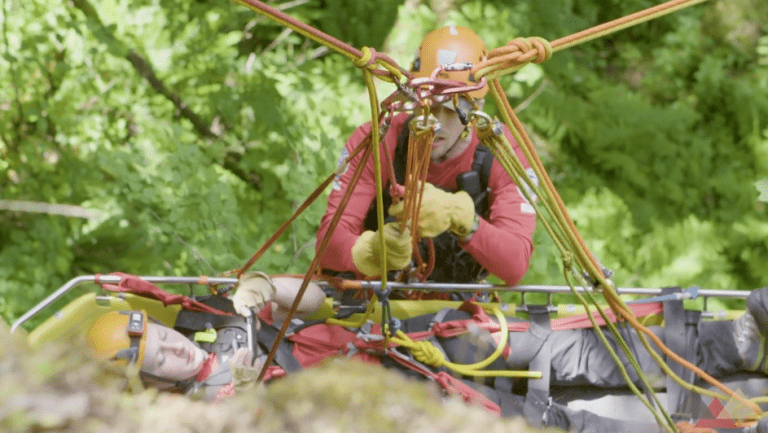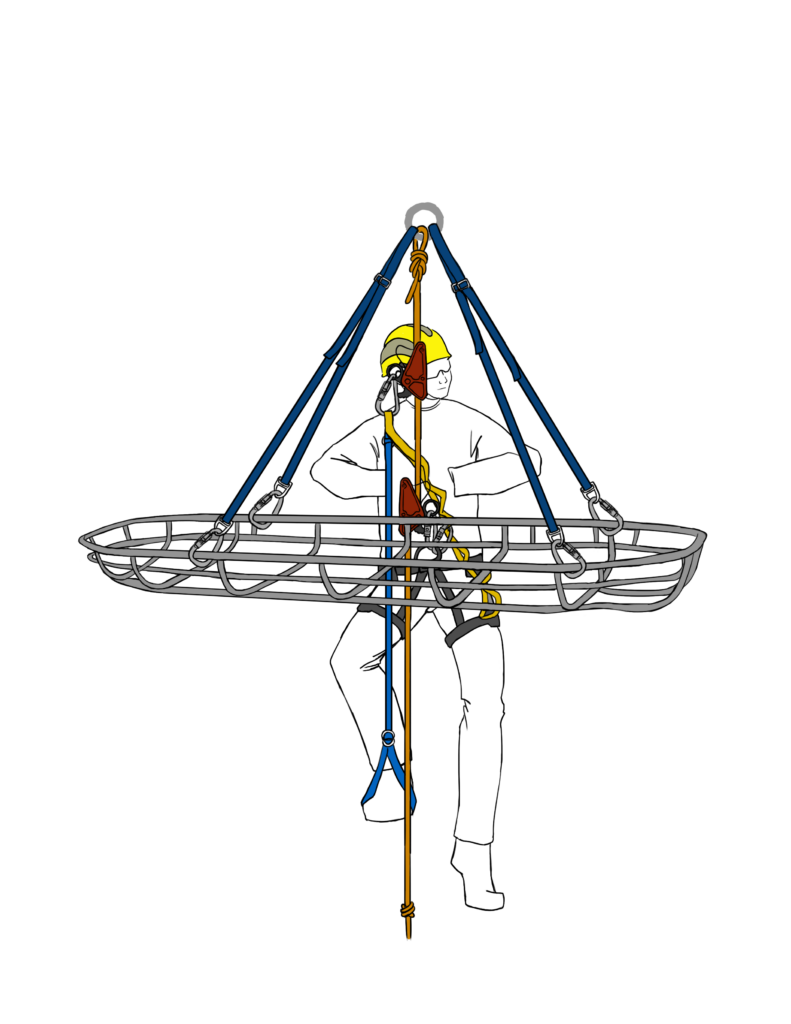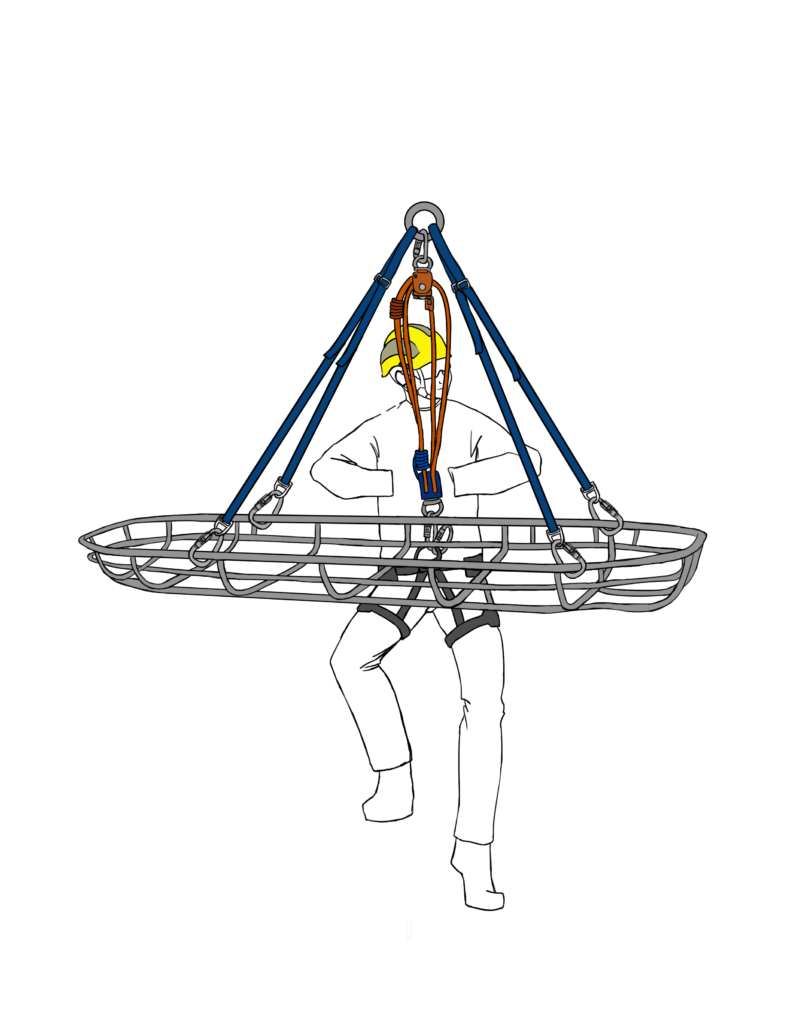The tender line is one of the most important aspects of litter handling. It keeps the weight of the litter off you, allowing for better control and safety. Using an ascender with a spring-loaded action gives you more control and makes it easier to move up and down the line. The knot at the bottom can also act as a backup if the ascender should fail. Investing in an ascender with a spring-loaded action and tying a knot at the bottom of the tender line provides extra security and peace of mind for those handling litters. That’s why we strongly recommend using this combination when it comes to litter handling. With these measures in place, you can rest assured that you and your team are protected.
Using an etrier with a tie-in system can make ascending and descending a rope much easier. When using this system, stand up in the etrier, then pull on the end of the tender line below the ascender to move it up to your desired location. To lower down, open the cam, lower to the desired position and transfer weight from the etrier back to the ascender. Attaching a runner from your harness to the ascender with an etrier provides another point of attachment for added security. The CMC Etrier with Tie-In is specifically designed for this purpose, ensuring a safe and secure climb.
Having the tender’s position at just below the railing will help them keep the litter away from the wall, while still giving access to the patient. It is important for tenders to keep their feet high when working past an overhang; in this situation, it is recommended that their toes should be almost level with the top of the litter as they descend past the lip. Additionally, having a long tail on the tender line allows them to go below the litter if they need to clear rock or brush out of the way. By following these guidelines, tenders can ensure that their equipment is used in a safe and effective manner. This will ultimately help protect the patient during their descent and make it a smoother experience for all. Properly utilizing the harness ascender can make any descent down a wall much easier and safer. It is important to remember these tips when attempting this task. With the right preparation and knowledge, it can be done safely and easily.
The AZTEK LT system can provide a highly reliable and safe way to tend the litter. It allows for easy rope adjustment as needed, enabling the tender to raise or lower their position. This makes it ideal for any situation requiring rapid response and quick movements in order to help those needing assistance from the litter. Additionally, the system is equipped with a top-quality pulley, which makes rope adjustment and tending the litter much easier. Plus, it includes a lower prusik hitch for added security and safety. All in all, the AZTEK LT system can be found to be highly reliable and efficient in any situation requiring quick responses and quick movements.
The tender should always maintain contact with the patient, ensuring that they are comfortable and safe. The right restraints will help keep your tender secured in their optimal position. A multi-loop strap or a web sling can be used but they don’t offer as much adjustability as a litter strap connected to the end of the litter and to the tender’s harness. This method allows for a gravity-fighting pendulum, and the flexibility to place the tender closer to the patient’s head if desired. Utilizing these restraints will provide your patient with peace of mind as they are being transported, knowing that their tender is safely secured in the best possible position.
The high-tender position is a great way to ensure that your team can navigate the litter past an overhanging edge. It allows the tender to keep a greater distance from any structure walls or cliffs while still maintaining clearance of the litter. By taking this approach, you’ll be able to make rapid progress with minimal risk and disruption. In addition, for a tall litter tender, this position allows them to not only keep the litter at a safe distance but also to move the rope grab up the tender line so that they can stay low on the line while still being able to place the tender’s fee up high near the far rail of the litter. The litter harness legs are designed to provide maximum comfort and support for both the patient and the tender.
Peace on your Days
Lance











